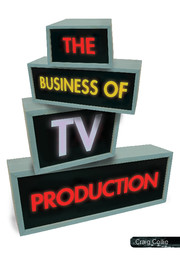Book contents
- Frontmatter
- Contents
- Preface
- Diagrams and tables
- Abbreviations
- Part A Opiate of the people: the television industry
- Part B Massage parlour: development and funding of a project
- Part C Riding the tiger: management of the production
- Chapter 12 Commencement of pre-production
- Chapter 13 Documentation and office systems
- Chapter 14 Crew, equipment and facilities
- Chapter 15 Casting, rehearsal and performance
- Chapter 16 Locations
- Chapter 17 Travel arrangements
- Chapter 18 Drafting the production budget
- Chapter 19 Scheduling the shoot
- Chapter 20 Preparing studio and outside broadcast productions
- Chapter 21 Management of the shoot
- Chapter 22 Management of the production budget
- Chapter 23 Post-production through to delivery
- Part D A nod to the gatekeepers: the environment of television
- Index
- References
Chapter 13 - Documentation and office systems
Published online by Cambridge University Press: 05 June 2012
- Frontmatter
- Contents
- Preface
- Diagrams and tables
- Abbreviations
- Part A Opiate of the people: the television industry
- Part B Massage parlour: development and funding of a project
- Part C Riding the tiger: management of the production
- Chapter 12 Commencement of pre-production
- Chapter 13 Documentation and office systems
- Chapter 14 Crew, equipment and facilities
- Chapter 15 Casting, rehearsal and performance
- Chapter 16 Locations
- Chapter 17 Travel arrangements
- Chapter 18 Drafting the production budget
- Chapter 19 Scheduling the shoot
- Chapter 20 Preparing studio and outside broadcast productions
- Chapter 21 Management of the shoot
- Chapter 22 Management of the production budget
- Chapter 23 Post-production through to delivery
- Part D A nod to the gatekeepers: the environment of television
- Index
- References
Summary
No-one thinks that paperwork is exciting, but without it the coordination of the logistics and management of a production – and especially a large and complex production – is just not possible. It is the means of tracking all the elements that must be in place at each step along the production pathway, and of making sure that the production isn't generating unnecessary costs that will result in compromises – which are equally as unnecessary – in the final product. The objective is to make the best program within the resources, not the best program despite the waste of resources.
As noted in Chapter 12, setting up an office starts with the commencement of pre-production, if not before. The production manager is one of the first people hired on the production team, and they will inherit some key documents that have been generated during development (see Chapter 12). They will also be instrumental, in discussion with the producer, in selecting an office and establishing furnishings, fittings, filing cabinets and communications, as described in Chapter 12, unless this is already in place as part of the production company, and suited to the needs of the project.
What follows in this chapter is an overview of the office systems and their supporting documentation that enable the production office to monitor and report on production progress.
- Type
- Chapter
- Information
- The Business of TV Production , pp. 204 - 220Publisher: Cambridge University PressPrint publication year: 2007



